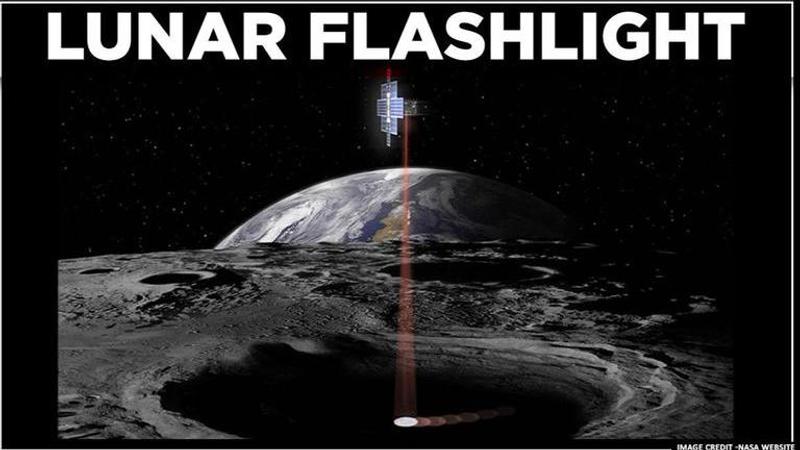Published 07:48 IST, April 29th 2020
NASA to laser check Moon's darkest craters for signs of water before Artemis mission
Over the course of two months, the Lunar Flashlight will beam its laser over Moon's south pole into permanently shadowed regions and probe the surface for water

Since the announcement of the Artemis programme in May 2019, NASA has been preparing for its ambitious mission to send the first woman and next man on the Moon by 2024. With the Artemis programme, which has been dubbed as 'Humanity's Return to the Moon', scientists aim to explore the lunar surface using innovative technologies with sustainable architecture. Now, in a recently published paper, NASA has detailed its plan to explore possible water resources on the surface of Moon with a Lunar Flashlight.
In the paper, published in the April 2020 issue of a scientific journal, NASA scientists described the Lunar Flashlight as a small satellite that will search for water ice exposures in Moon's permanently shadowed regions (PSRs) near the poles. About the size of a briefcase, the small satellite can detect naturally-occurring surface ice that is believed to be at the bottom of darkest craters and has never seen sunlight.
Water is a heavy and therefore expensive resource to launch from Earth, and astronauts during the Artemis mission to Moon could need water for rocket fuel, if not for drinking purposes. Scientists have suspected the existence of water in the form of ice molecules inside the coldest and darkest craters on Moon but previous quantitative measurements have been ambiguous. The Lunar Flashlight will help NASA ascertain the amount of usable water ice exposures on Moon before the mission takes from Earth.
Finding Water of Moon
Over the course of two months, the Lunar Flashlight will beam its laser over Moon's south pole into permanently shadowed regions and probe the surface for water ice exposures. Found near the lunar poles, these dark craters have been identified as 'cold traps' that accumulate molecules of water ice among other ice compounds. These molecules could have come from comets and asteroids impacting the lunar surface or could be a product of solar wind interactions with the lunar soil.
Barbara Cohen, a scientist on the mission, explained in the paper "The Sun moves around the crater horizon but never actually shines into the crater. Because these craters are so cold, these molecules never receive enough energy to escape, so they become trapped and accumulate over billions of years."
The Lunar Flashlight will beam near-infrared wavelengths that are readily absorbed by water. If the lasers hit bare rocks in the dark craters, the light will reflect back to the satellite but if the light is absorbed, it would confirm the presence of water ice in these lunar caves. The greater the absorption, the more widespread ice at the surface.
The Lunar Flashlight
As detailed in the NASA document, the Lunar Flashlight has been developed by the American space agency's Jet Propulsion Laboratory (JPL) and seeks to achieve several technological firsts, including being the first mission to look for water ice exposures using lasers. It will also be the first spacecraft to use a 'green' propellant, which is safer to transport and store than Hydrazine.
John Baker, Lunar Flashlight project manager at JPL, added that the Lunar Flashlight is a lower-cost technology demonstration mission that can fill gaps in present scientific knowledge, better prepare the astronauts for a possible extended stay on the Moon and test key technologies that may be used in future space expeditions.
Updated 07:48 IST, April 29th 2020



